Abstract
OBJECTIVES: The purpose of this study was to identify factors related to pregnancy and childbirth that might be predictive of a patient's length of stay after delivery and to model variations in length of stay. METHODS: California hospital discharge data on maternity patients (n = 499,912) were analyzed. Hierarchical linear modeling was used to adjust for patient case mix and hospital characteristics and to account for the dependence of outcome variables within hospitals. RESULTS: Substantial variation in length of stay among patients was observed. The variation was mainly attributed to delivery type (vaginal or cesarean section), the patient's clinical risk factors, and severity of complications (if any). Furthermore, hospitals differed significantly in maternity lengths of stay even after adjustment for patient case mix. CONCLUSIONS: Developing risk-adjusted models for length of stay is a complex process but is essential for understanding variation. The hierarchical linear model approach described here represents a more efficient and appropriate way of studying interhospital variations than the traditional regression approach.
Full text
PDF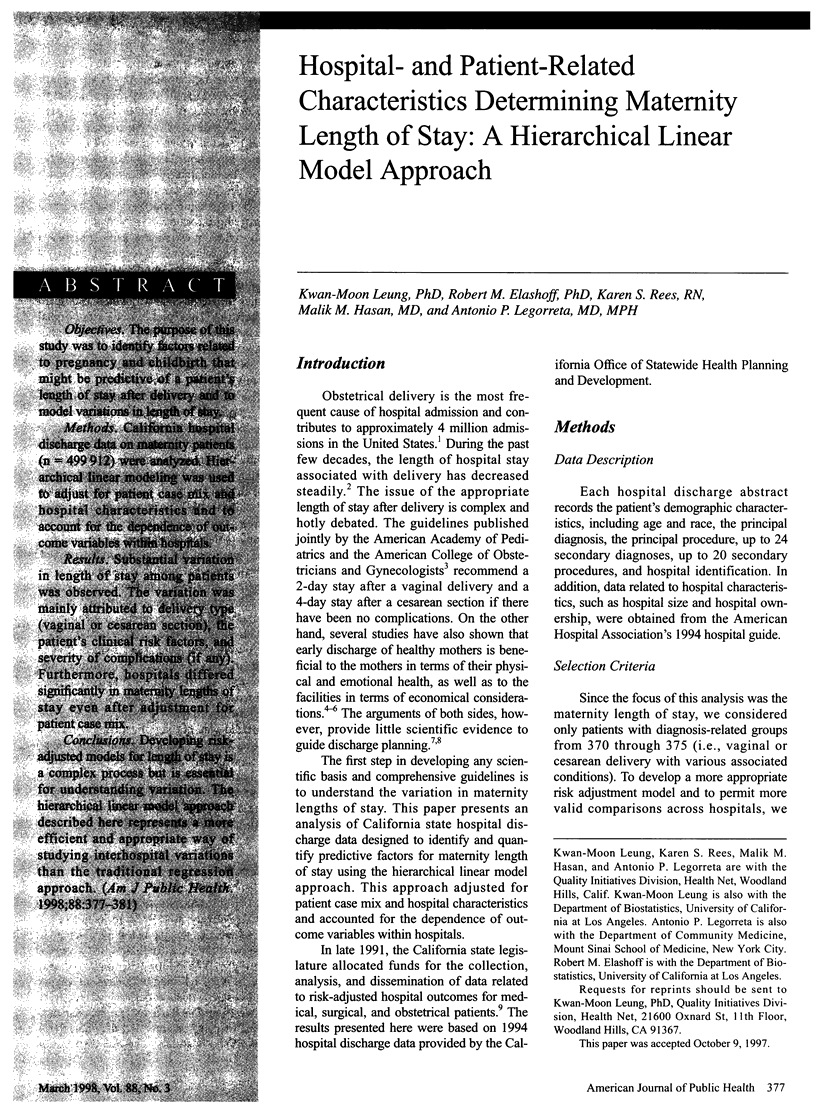
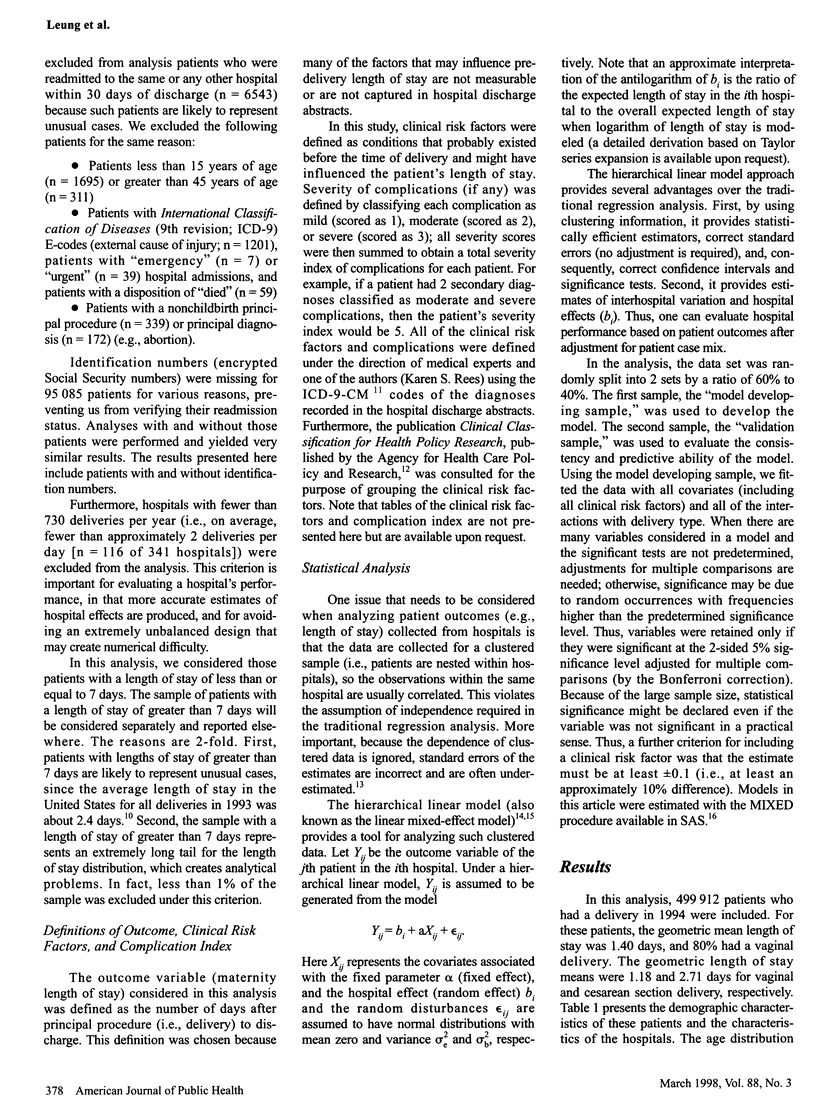
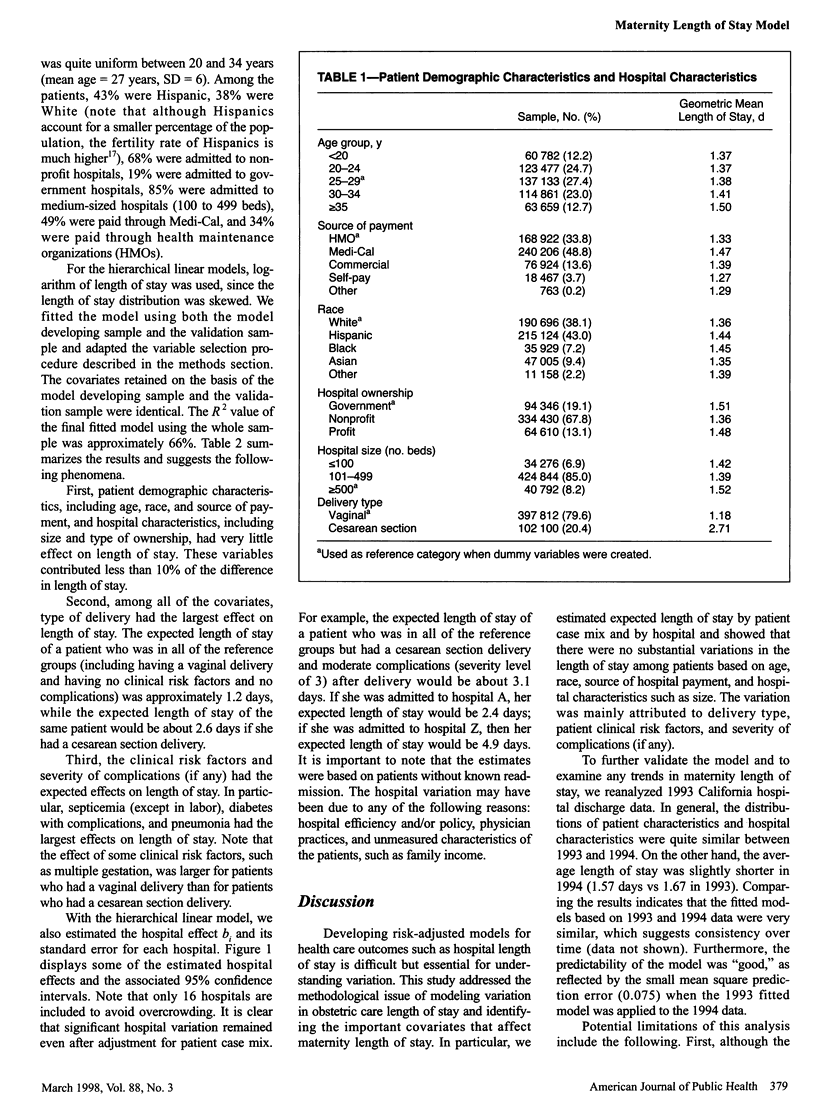
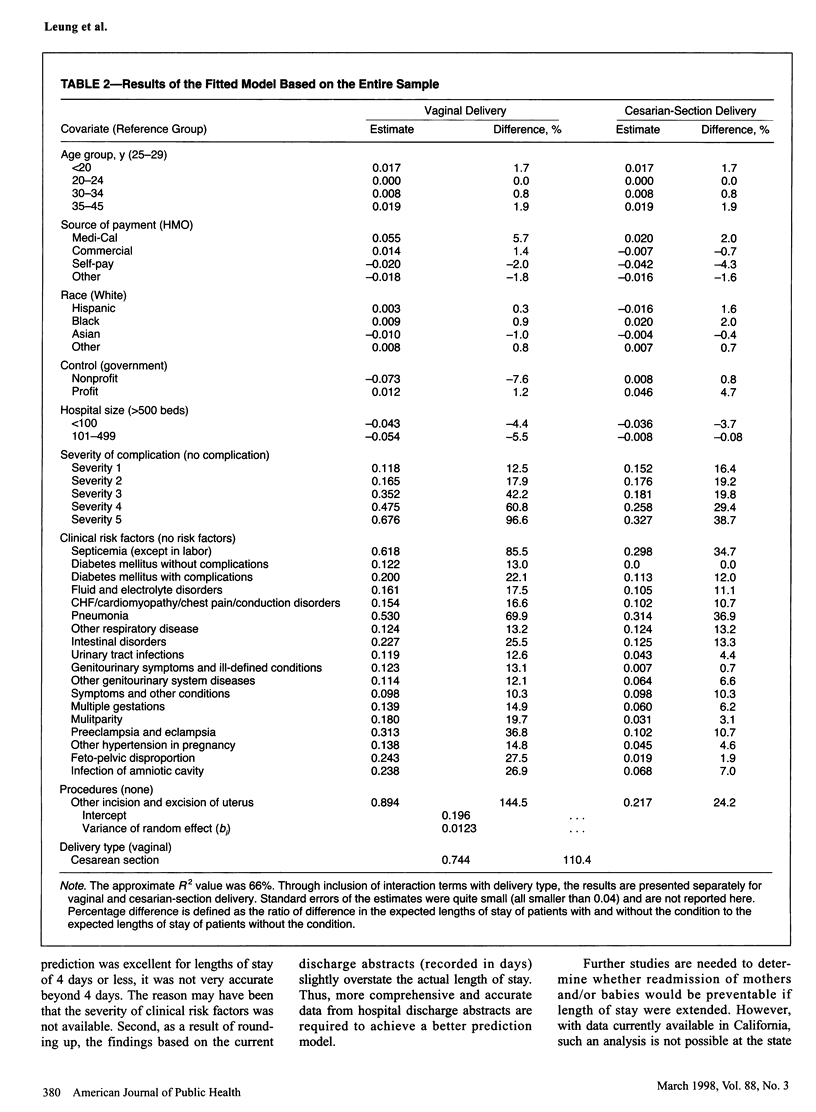
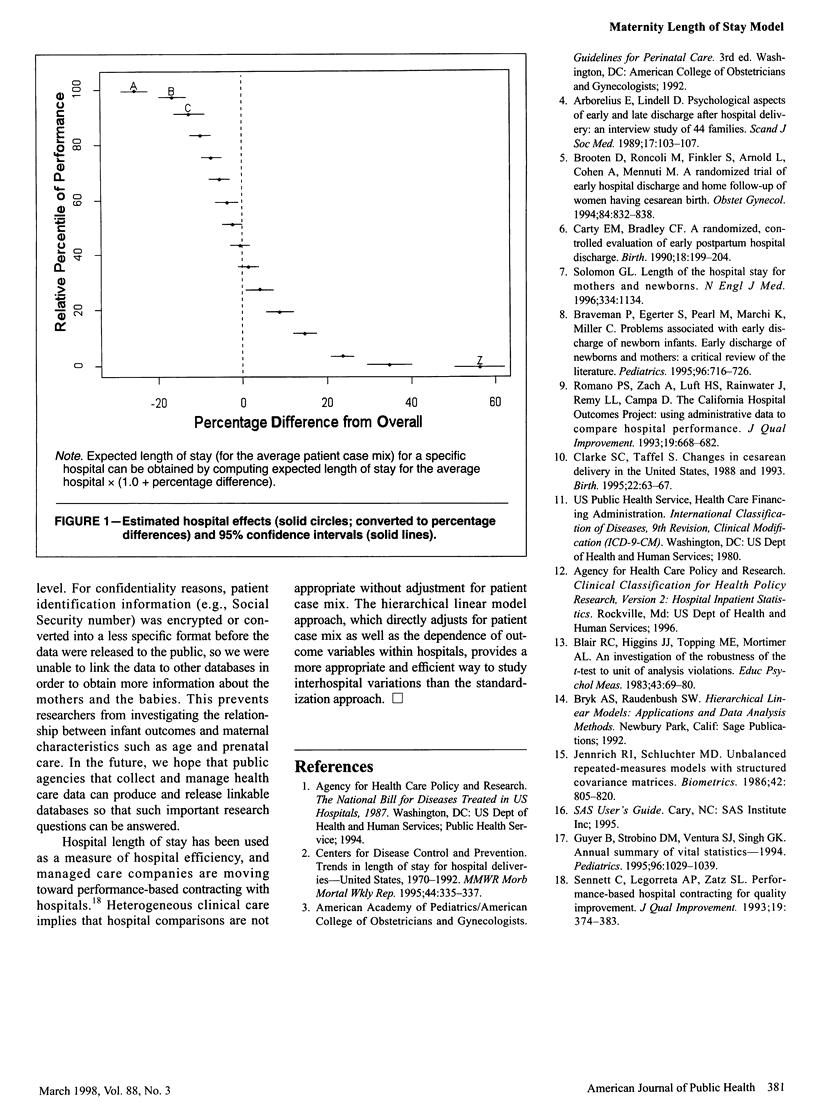
Selected References
These references are in PubMed. This may not be the complete list of references from this article.
- Arborelius E., Lindell D. Psychological aspects of early and late discharge after hospital delivery. An interview study of 44 families. Scand J Soc Med. 1989;17(1):103–107. doi: 10.1177/140349488901700115. [DOI] [PubMed] [Google Scholar]
- Braveman P., Egerter S., Pearl M., Marchi K., Miller C. Problems associated with early discharge of newborn infants. Early discharge of newborns and mothers: a critical review of the literature. Pediatrics. 1995 Oct;96(4 Pt 1):716–726. [PubMed] [Google Scholar]
- Brooten D., Roncoli M., Finkler S., Arnold L., Cohen A., Mennuti M. A randomized trial of early hospital discharge and home follow-up of women having cesarean birth. Obstet Gynecol. 1994 Nov;84(5):832–838. [PMC free article] [PubMed] [Google Scholar]
- Carty E. M., Bradley C. F. A randomized, controlled evaluation of early postpartum hospital discharge. Birth. 1990 Dec;17(4):199–204. doi: 10.1111/j.1523-536x.1990.tb00021.x. [DOI] [PubMed] [Google Scholar]
- Clarke S. C., Taffel S. Changes in cesarean delivery in the United States, 1988 and 1993. Birth. 1995 Jun;22(2):63–67. doi: 10.1111/j.1523-536x.1995.tb00561.x. [DOI] [PubMed] [Google Scholar]
- Guyer B., Strobino D. M., Ventura S. J., Singh G. K. Annual summary of vital statistics-1994. Pediatrics. 1995 Dec;96(6):1029–1039. [PubMed] [Google Scholar]
- Jennrich R. I., Schluchter M. D. Unbalanced repeated-measures models with structured covariance matrices. Biometrics. 1986 Dec;42(4):805–820. [PubMed] [Google Scholar]
- Sennett C., Legorreta A. P., Zatz S. L. Performance-based hospital contracting for quality improvement. Jt Comm J Qual Improv. 1993 Sep;19(9):374–383. doi: 10.1016/s1070-3241(16)30022-0. [DOI] [PubMed] [Google Scholar]
- Solomon G. L. Length of the hospital stay for mothers and newborns. N Engl J Med. 1996 Apr 25;334(17):1134–1135. [PubMed] [Google Scholar]


